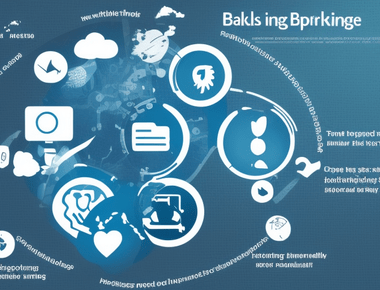

Quantum AI for quantic speed IoT communication
The world of quantum computing is a fascinating one, and its potential applications in the realm of artificial intelligence (AI) are nothing short of revolutionary. Quantum AI has been identified as an especially promising field for research and development, with many experts believing that it could revolutionize the way we communicate over the Internet-of-Things (IoT). In this blog post, we will take a closer look at how quantum AI can be used to create quantic speed IoT communication systems. We’ll explore what makes quantum AI so special compared to traditional machine learning methods and discuss why it might hold enormous potential for creating faster networks with more reliable data transmission rates than ever before. By the end of this article, you should have a greater understanding about how quantum AI can help us build better IoT systems for our digital future!
What Is Quantum Artificial Intelligence?
Quantum Artificial Intelligence (QAI) is an emerging branch within computer science that seeks to combine elements from classical computing models, such as neural networks or evolutionary algorithms, with those found in modern physics, such as superpositioning or entanglement theory. The idea behind QAI is that by using these two distinct approaches together, they may be able to produce unique insights into problems that neither approach alone would have been able to solve. As a result, QAI has become increasingly popular among researchers looking for new ways to tackle complex tasks like image recognition or natural language processing, largely due to its ability to leverage vast amounts of computational power while still being relatively easy to implement when compared to other types of machine learning techniques available today.
How Can It Help With Quantic Speed IoT Communication?
One major advantage of incorporating elements from modern physics into your system design is its capacity to offer incredibly fast speeds when transmitting information across different nodes connected via Internet Protocol addressable devices, known collectively under the umbrella term ‘Internet of Things’ (IoT). This type of networking allows users to access various services through a single device without having to worry about manually configuring settings for each individual service provider - something that is highly desirable given the complexity involved in setting up multiple connections simultaneously.
Furthermore, since most IoT-based solutions rely heavily on secure encryption protocols to ensure that only authorized individuals can gain access to sensitive data, any increase in speed achieved during the transmission process also means a higher level of security protection for the overall network itself, making them an attractive option for businesses that need to protect confidential customer information at all times.
Advantages Of Using Quantum Computing For Quantic Speed Networking
When considering use case scenarios involving large-scale deployments where hundreds or thousands of interconnected objects must interact in real time in order to provide meaningful results, there is no doubt that the benefits of adding a layer of sophisticated technology like quantum computing to the existing infrastructure stack previously discussed above are significant.
Firstly, because the majority of calculations required to carry out operations within the context of distributed ledger technologies depend on heavy-duty cryptographic algorithms that themselves require a considerable amount of energy and resources to complete successfully, leveraging the capabilities offered by qubits can greatly reduce the overall workload, thereby freeing up valuable hardware cycles to perform additional computations elsewhere.
Secondly, instead of relying solely on traditional packet-switching mechanisms utilized in a typical router setup to send and receive signals between various devices located in remote locations, taking advantage of the principles of wave function collapse to direct packets along the shortest path possible can dramatically improve latency issues that are otherwise experienced, reducing response times to almost instantaneous levels, ultimately leading to an improved user experience. A third benefit, perhaps the greatest, comes from the fact that the nature of the underlying mathematics employed helps make the entire system virtually tamper-proof, rendering attempts by malicious actors to breach security measures a futile attempt to achieve the desired outcome.
Lastly, but not least, the addition of a layer of redundancy built into the inherent architecture ensures continuity of operation in the event that a primary node fails, ensuring maximum uptime and availability even when worst-case scenarios occur.
Share
Related Posts



Quick Links
Legal Stuff



